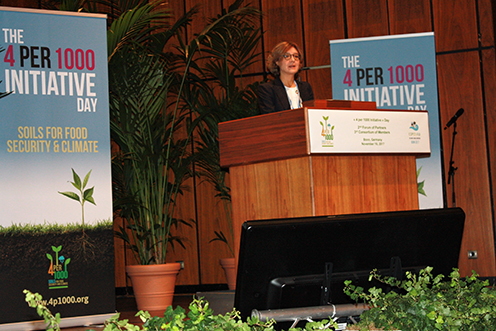Within the framework of the COP 23 Climate Summit in Bonn (Germany)
Isabel García Tejerina takes part in the high-level round table of the "4 per 1,000 Initiative" which Spain signed up to at COP21 in Paris
News - 2017.11.16
She added that this will be taken into account in the Agriculture, Climate and Environment Strategy, which will include the forest sector, and which is starting to be drawn up to define the optimum contribution from agriculture and forestry to the challenge of climate change and to the conservation of the environment. This strategy also seeks to form part of the future Law on Climate Change and Energy Transition on which the Government of Spain has been working in recent months.
This message was stressed by Isabel García Tejerina during her participation at the round table at the Bonn Climate Summit (COP23) on this initiative, which was launched at the Paris Climate Summit (COP 21) within the framework of the "Lima-Paris Action Agenda" which Spain signed up to in December 2015.
The aim of this Initiative is to increase the content of organic carbon in soils so that these can become carbon sinks, mitigate climate change, improve their resilience, and hence, adapt to future climate change scenarios. Isabel García Tejerina stressed that "Spain is committed to the goals of this imitative and to the additional benefits that this provides, such as a reduction in erosion and desertification, and conservation of bio-diversity, all of which are very important aspects for our country, given the vulnerability of vast areas of our land".
Application of the Initiative at a national level
The minister underlined that the Ministry of Agriculture and Fisheries, Food and Environmental Affairs has commissioned a study to assess the potential application of the Initiative at a national level, to analyse the different sources of organic material for Spanish soil and to estimate the associated reductions in emissions to soil.
The study, which will be presented in the coming months, places great emphasis on types of land use and climate management, two decisive factors in the concentration and amount of organic carbon in the soil. It is also noteworthy that there are several types of land use management, with practices that foster soil being permanently covered, which increases organic carbon levels in soil. It also observes that there are major differences in the rates of carbon increase, depending on the measures adopted, and hence it is necessary to analyse and assess these measures on an individual basis.
Non official translation





